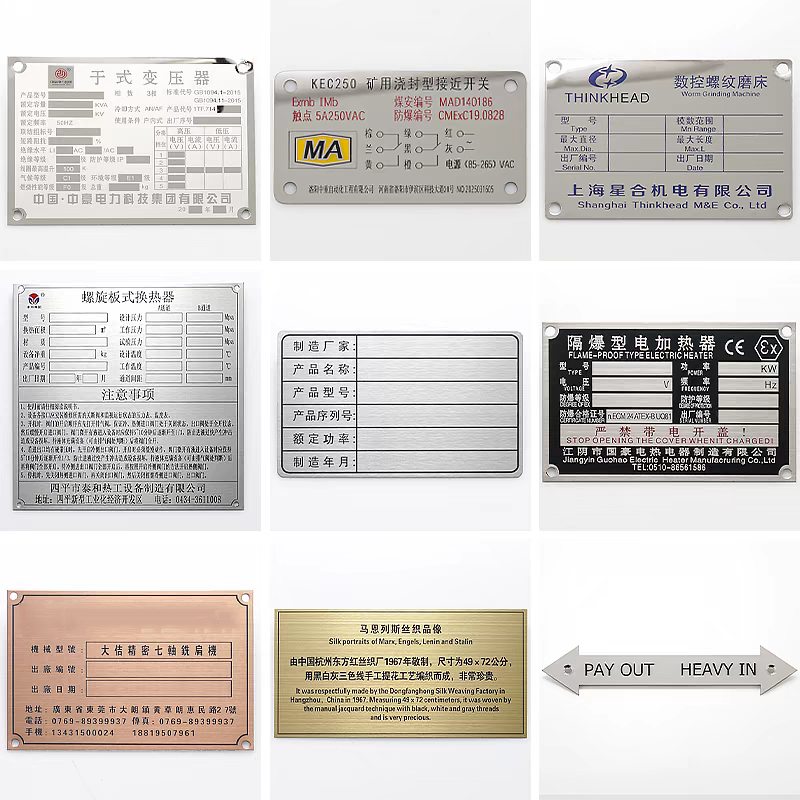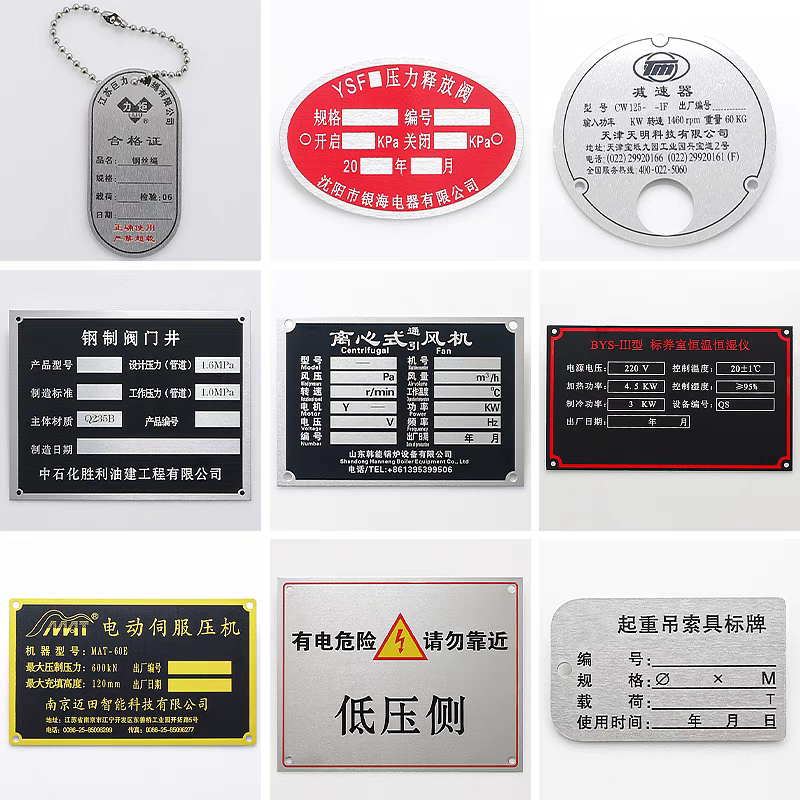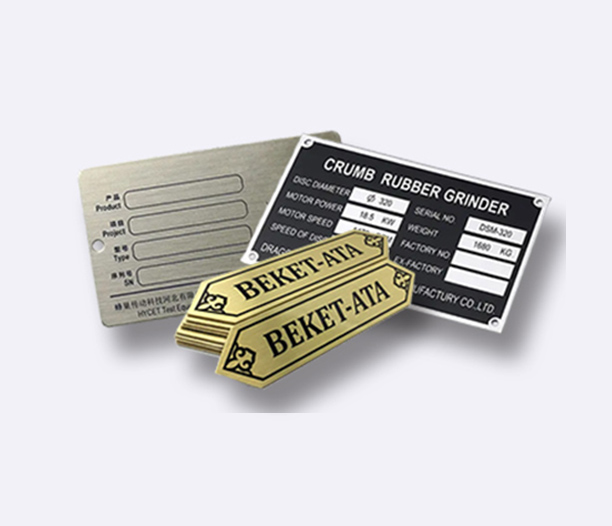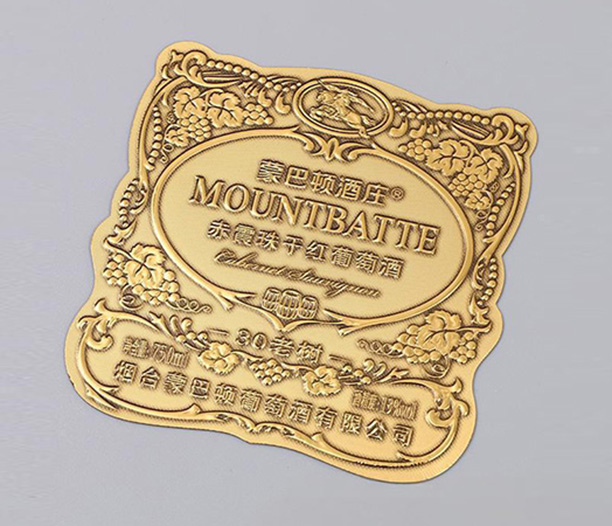In the demanding world of industrial asset tracking, safety compliance, and equipment identification, blank metal tags stainless steel stand as the undisputed champions. These unassuming plates offer a foundation of unparalleled durability and versatility that other materials struggle to match. But what makes them so indispensable across countless sectors? This article dives deep into five crucial aspects that make blank metal tags stainless steel the go-to solution for professionals who require reliability, longevity, and performance.

1. Unmatched Material Properties: The Core Strength of Stainless Steel Tags
The fundamental reason blank metal tags stainless steel excel lies in the inherent properties of stainless steel itself. Primarily composed of iron, chromium (typically at least 10.5%), and often nickel and other alloys, stainless steel offers a unique combination:
Superior Corrosion Resistance: This is the hallmark feature. The chromium forms a passive, invisible oxide layer on the surface that protects the underlying metal from rust and corrosion caused by moisture, chemicals, salt spray, acids, and alkalis. This makes stainless steel blank tags ideal for harsh environments like marine applications, chemical processing plants, food and beverage production, outdoor installations, and wastewater treatment facilities.
Exceptional Strength and Durability: Stainless steel provides excellent mechanical strength and resistance to impact, abrasion, and deformation. Blank stainless steel tags can withstand significant physical stress, vibration, and accidental knocks without cracking, breaking, or losing their shape, ensuring the identification remains intact and legible.
High-Temperature Tolerance: Grades like 304 and especially 316 stainless steel maintain their structural integrity and corrosion resistance at elevated temperatures (typically up to 870°C / 1600°F for intermittent service, lower for continuous). This makes blank metal tags stainless steel suitable for boilers, engines, heat exchangers, and other high-heat applications where plastic tags would melt or degrade.
Hygienic and Non-Porous Surface: The smooth, non-porous surface of stainless steel prevents bacteria growth and is easy to clean and sterilize. This is critical for stainless steel blank tags used in pharmaceutical manufacturing, food processing, medical equipment, and cleanrooms.
Aesthetic Appeal: Stainless steel offers a clean, professional, and modern appearance. It can be polished to a mirror finish, brushed for a satin look, or left with a natural mill finish, providing aesthetic flexibility alongside functionality.
2. Manufacturing Processes: Crafting Precision Blank Tags
Blank metal tags stainless steel start their journey as coils or sheets of specific grades (most commonly 304 or 316). The transformation into precise, ready-to-use tags involves several key processes:
Material Selection & Shearing: Sheets of the chosen stainless steel grade and thickness (common gauges range from 0.015" to 0.125" / 0.4mm to 3.0mm) are cut into larger blanks using large shear presses.
Stamping/Punching: This is the primary method for shaping the blank tags. Steel rule dies or precision punch and die sets are used in hydraulic or mechanical presses to cut the individual tag shapes from the larger blanks. This process defines:
Size: From tiny 0.5" x 0.25" labels to large 6" x 4" data plates and beyond.
Shape: Rectangular, circular, oval, square, or custom-designed shapes.
Holes: Pilot holes, center holes, or multiple holes for rivets, screws, bolts, or wire are punched simultaneously. Hole sizes and positions are critical for mounting.
Edge Characteristics: Dies can produce smooth edges, beveled edges, or even specific textures.
Deburring: After punching, sharp edges and small metal protrusions (burrs) are meticulously removed through tumbling (vibratory or rotary), brushing, or specialized deburring machines. This ensures safety during handling and a professional finish on the stainless steel blank tags.
Surface Finishing (Optional at Blank Stage): While often left in a natural mill finish for subsequent marking, blanks can undergo:
Brushing: Creates a uniform satin grain finish.
Polishing: Achieves a mirror-like reflective surface.
Bead Blasting: Produces a uniform, non-reflective matte texture.
Quality Control & Packaging: Each batch of blank metal tags stainless steel undergoes inspection for dimensional accuracy, hole placement, surface defects, and finish consistency before being carefully packaged to prevent scratching or damage during transit.
3. Diverse Applications: Where Blank Stainless Steel Tags Shine
The robustness and versatility of blank metal tags stainless steel make them ubiquitous across a vast array of industries and uses:
Industrial Machinery & Equipment: Permanent identification of machines, components, control panels, valves, pumps, motors, and tools. Tags withstand oil, grease, solvents, and physical abuse common in factories and workshops.
Electrical & Utility: Identifying circuit breakers, transformers, switchgear, junction boxes, and electrical panels. Non-conductive when unmarked, but the metal body provides grounding potential if needed.
Marine & Offshore: Crucial for equipment exposed to saltwater, constant humidity, and UV radiation. Stainless steel blank tags resist pitting and corrosion far better than aluminum or coated steel. Used on ships, rigs, dockside equipment, and naval applications.
Chemical & Petrochemical: Withstanding exposure to aggressive acids, alkalis, solvents, and high-pressure/temperature processes. Essential for labeling pipes, vessels, reactors, and safety equipment.
Food, Beverage & Pharmaceutical (GMP Compliance): Hygienic surface prevents contamination, withstands frequent high-pressure washing, steam cleaning (CIP/SIP), and exposure to food acids/sanitizers. Used for equipment ID, batch tracking, and process instructions.
Aerospace & Defense: Demanding requirements for weight, strength, corrosion resistance, and fire safety. Used on aircraft components, ground support equipment, and military hardware. Often requires specific alloys like 321 or 17-4PH.
Construction & Infrastructure: Durable identification for structural steel, HVAC systems, piping, fire safety equipment, and outdoor assets exposed to weather extremes.
Laboratory & Scientific Equipment: Resists chemicals and solvents while providing a durable surface for precise labeling.
Asset Tracking & Inventory Control: Blank stainless steel tags provide a permanent, tamper-resistant base for barcodes, QR codes, serial numbers, and asset IDs.

4. Customization & Marking Versatility: Making the Blank Tag Functional
The "blank" in blank metal tags stainless steel signifies their potential. Their primary purpose is to serve as a durable substrate for permanent identification. They offer immense flexibility for post-production customization:
Marking Methods:
Stamping: Using hardened steel dies and an impact press to create raised or indented characters/codes. Extremely durable and permanent. Ideal for serial numbers, part numbers, and basic text.
Embossing: Similar to stamping but creates raised lettering on one side with indentation on the reverse.
Etching (Chemical or Laser):
Chemical Etching: Uses acid to remove material, creating precise, clean, and corrosion-resistant markings. Excellent for fine detail, logos, barcodes, and complex graphics. Doesn't compromise the metal's integrity.
Laser Etching: A high-powered laser vaporizes the surface layer. Offers incredible precision, speed, and flexibility for text, graphics, barcodes, and serialization. Highly durable and permanent. The most common modern method for marking stainless steel blank tags.
Dot Peening: Uses a pneumatically or electrically driven stylus to create dimples forming characters/codes. Good durability at a lower cost than laser/stamping for some applications.
Screen Printing/Pad Printing: Applying ink or epoxy-based coatings. Requires excellent surface prep and often a protective overcoat for durability in harsh environments. Less permanent than mechanical methods but good for color coding.
Engraving: Using a rotating carbide bit or diamond drag to cut into the metal. Very durable but slower than laser/etching.
Information Flexibility: Virtually any information can be applied: asset numbers, serial numbers, barcodes (1D, 2D, QR), company logos, safety warnings, operating instructions, voltage ratings, pressure ratings, material specs, maintenance dates, and custom graphics.
Attachment Options: The pre-punched holes in blank metal tags stainless steel accommodate various secure mounting methods:
Rivets (most common, highly secure)
Screws/Bolts
Adhesive (Requires specific high-bond industrial adhesives compatible with stainless steel and the operating environment)
Welding (Directly or via welded studs)
Wire or cable ties (through holes)
5. Long-Term Value & Sustainability: The Enduring Choice
Choosing blank metal tags stainless steel is an investment in long-term performance and reduced lifecycle costs:
Exceptional Longevity & Reduced Replacement Costs: Unlike plastic, vinyl, or anodized aluminum tags that can fade, crack, peel, or corrode, stainless steel tags last for decades, often the lifetime of the asset itself. This drastically reduces the cost and labor associated with frequent tag replacement programs.
Tamper Resistance: The inherent strength of stainless steel makes these tags difficult to remove or alter without obvious damage, enhancing security for asset tracking and critical safety information.
Legibility Maintenance: Markings applied via etching, stamping, or laser engraving into the metal itself are integral to the tag. They won't rub off, fade from UV exposure, or be damaged by solvents or cleaning agents, ensuring critical information remains readable for the long haul.
Fire Resistance: Stainless steel does not burn or support combustion. It retains its strength at high temperatures and doesn't emit toxic fumes, making stainless steel blank tags essential for fire safety equipment identification and applications where fire risk exists.
Environmental Sustainability: Stainless steel is 100% recyclable without degradation of its properties. At the end of their extremely long service life, blank metal tags stainless steel can be fully recycled into new stainless steel products, contributing to a circular economy. Their durability also reduces waste generated by replacing inferior tags frequently.
Blank metal tags stainless steel are far more than simple pieces of metal. They represent a critical engineering solution built upon the fundamental strengths of stainless steel – unparalleled corrosion resistance, formidable strength, temperature resilience, and hygienic properties. Their versatility in manufacturing allows for precise sizing, shaping, and hole placement, while their blank state makes them the perfect, durable canvas for virtually any permanent marking method required, from industrial stamping to high-tech laser etching.
Whether facing the relentless assault of salt spray on a cargo ship, the caustic chemicals in a processing plant, the intense heat of an engine room, or the stringent hygiene demands of a pharmaceutical cleanroom, stainless steel blank tags deliver unwavering performance. Their ability to provide permanent, tamper-resistant, and highly legible identification translates directly into enhanced safety, improved operational efficiency, reliable asset tracking, and significant long-term cost savings by eliminating the need for constant replacement. When reliability, durability, and longevity in identification are non-negotiable, blank metal tags stainless steel remain the proven, indispensable choice across countless industries worldwide. Investing in them is investing in the enduring clarity and security of your critical information.






